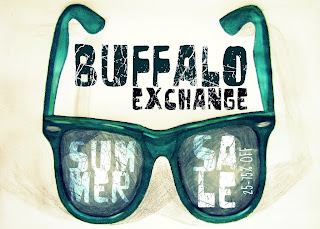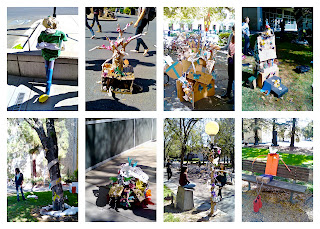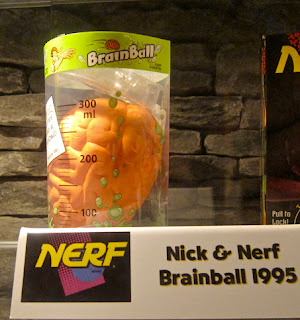As Dave Harper asserts on his blog (borrowing from Paul Rand), "Design is the relationship between form and content." Often times, a design's success can be weighed upon heavily by how well the content (the idea behind a design) and the form (the visual aspect of the work as a whole) work together in a design.
"Objectified" directed by Gary Hustwit
Poster design: Michael C. Place
The documentary film "Objectified" by Gary Hustwit showcases the interaction of form and content in many of the mass-produced items we use everyday. For example, near the beginning of the film, a team of designers are trying to design a better toothbrush. They are in agreement that the content, a teeth cleaning apparatus, is essential for every day life, but they feel the form can be improved upon. They proceed to try out different forms, such as reusable handles that will last years with removable heads that can be disposed of and replaced. They are able to find a way to convey their ideas of dental hygiene and environmental awareness through forms of stainless steel and wood, that are still comfortable to hold and use. The content and form go hand-in-hand, form perfectly expressing content.
One designer in the film, Karim Rashid touches on the idea that many designers tend to stick to popular and practical contents while repeatedly changing the form. He asks the question, "Why do we visit archetypes over and over?" This idea can be seen throughout the film when we see several different takes on the common chair. Each designer finds a different form with which to express the content of a place to sit. Designers are constantly looking at archetypes like this and finding forms that they feel better express the content, be it a matter of comfort, style, or functionality. These designers are using already existing content to inspire new and different forms. Not all designers work this way though, designer Mark Newson keeps random materials around his house, fragments of form, hoping to find inspiration for new content, from the already existing pieces of form.
Whether the content inspires the form or form inspires the content is insignificant; what is important is that the balance each other out in a way that creates a product that expresses exactly what it is meant to in a way that is attractive, comfortable, and functional.








